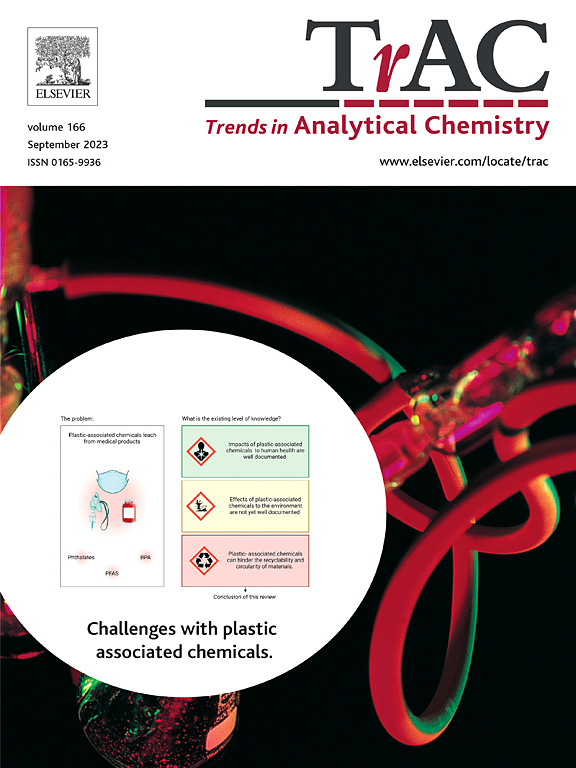Advances in mass spectrometry-based strategies for analyzing sialic acid linkage isomers
IF 12
1区 化学
Q1 CHEMISTRY, ANALYTICAL
引用次数: 0
Abstract
Glycosylation is a crucial post-translational modification influencing protein function and disease development. Among glycan structures, α2,3- and α2,6-sialylated glycans exhibit distinct biological roles but are challenging to distinguish due to their structural similarity. Mass spectrometry (MS)-based techniques have become the indispensable platforms for sialic acid linkage isomers characterization, providing unparalleled sensitivity and rapid N-glycans profiling when synergized with complementary analytical strategies. This review focuses on the two main sialic acid linkage isomers, α2,3- and α2,6-, providing a brief overview of their roles in regulating biological functions and emphasizing the urgent need for their accurate detection. The review presents a detailed overview of recent advancements in MS-based methodologies for analyzing sialic acid linkage isomers, including non-derivatization, derivatization, and hybrid approaches. Furthermore, it highlights recent progress in glycomics and glycoproteomics data analysis, proposing theoretical insights to guide the selection of optimal methods for precise isomer identification and quantification.
基于质谱分析唾液酸链异构体策略的研究进展
糖基化是影响蛋白质功能和疾病发展的重要翻译后修饰。在多糖结构中,α2,3-和α2,6-唾液化多糖表现出不同的生物学作用,但由于其结构相似性而难以区分。基于质谱(MS)的技术已经成为唾液酸链异构体表征不可或缺的平台,当与互补的分析策略协同作用时,提供无与伦比的灵敏度和快速的n -聚糖分析。本文综述了两种主要的唾液酸连锁异构体α2,3-和α2,6-,简要介绍了它们在调节生物学功能中的作用,并强调了对它们进行准确检测的迫切需要。本文详细介绍了基于ms的唾液酸链异构体分析方法的最新进展,包括非衍生化、衍生化和杂交方法。此外,它还强调了糖组学和糖蛋白组学数据分析的最新进展,提出了指导选择最佳方法进行精确异构体鉴定和定量的理论见解。
本文章由计算机程序翻译,如有差异,请以英文原文为准。
求助全文
约1分钟内获得全文
求助全文
来源期刊

Trends in Analytical Chemistry
化学-分析化学
CiteScore
20.00
自引率
4.60%
发文量
257
审稿时长
3.4 months
期刊介绍:
TrAC publishes succinct and critical overviews of recent advancements in analytical chemistry, designed to assist analytical chemists and other users of analytical techniques. These reviews offer excellent, up-to-date, and timely coverage of various topics within analytical chemistry. Encompassing areas such as analytical instrumentation, biomedical analysis, biomolecular analysis, biosensors, chemical analysis, chemometrics, clinical chemistry, drug discovery, environmental analysis and monitoring, food analysis, forensic science, laboratory automation, materials science, metabolomics, pesticide-residue analysis, pharmaceutical analysis, proteomics, surface science, and water analysis and monitoring, these critical reviews provide comprehensive insights for practitioners in the field.
 求助内容:
求助内容: 应助结果提醒方式:
应助结果提醒方式:


